Irish menswear designers who cut it internationally are few and far between. In top place is Dubliner Daniel Kearns, currently based in London as creative director of the British heritage brand Kent & Curwen in a partnership deal with David Beckham.
The ex-Gonzaga rugby player has had a stellar career since graduating from the National College of Art and Design in Dublin and the Royal College of Art in London in 2000.

Moving to France immediately after college, he worked with a host of big names – Ungaro, John Galliano, Dolce & Gabbana and was menswear design director at Alexander McQueen for five years. After a stint with Louis Vuitton in Paris, he was headhunted for Yves St Laurent, consulted for Zegna and later became artistic director of the French lifestyle company Façonnable before his appointment at Kent & Curwen and his return to London from Paris with his wife and two children.
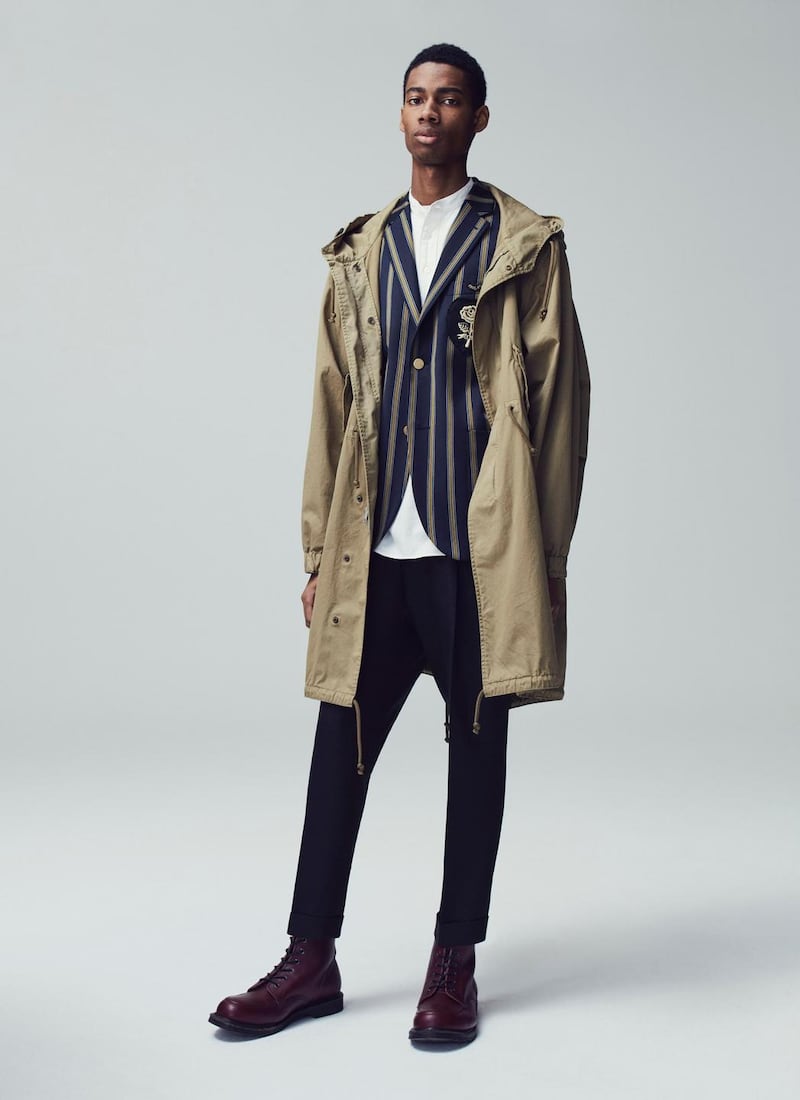
On a recent visit to Dublin to mark his second collection for Kent & Curwen, it is clear that he loves his current position, reinvigorating a brand with a long history making it relevant and appealing to a new generation.
“You are making clothes that you really want to wear and so it makes it massively enjoyable and if David loves them and wants to wear them, straightaway you know you are on the right track because he is such a style icon,” says Kearns, dressed in a handsome navy coat, (a new take on a frock coat, he explains), navy trousers, a white collarless shirt with the tie worn modishly underneath and a beanie – all from his Kent & Curwen collection.
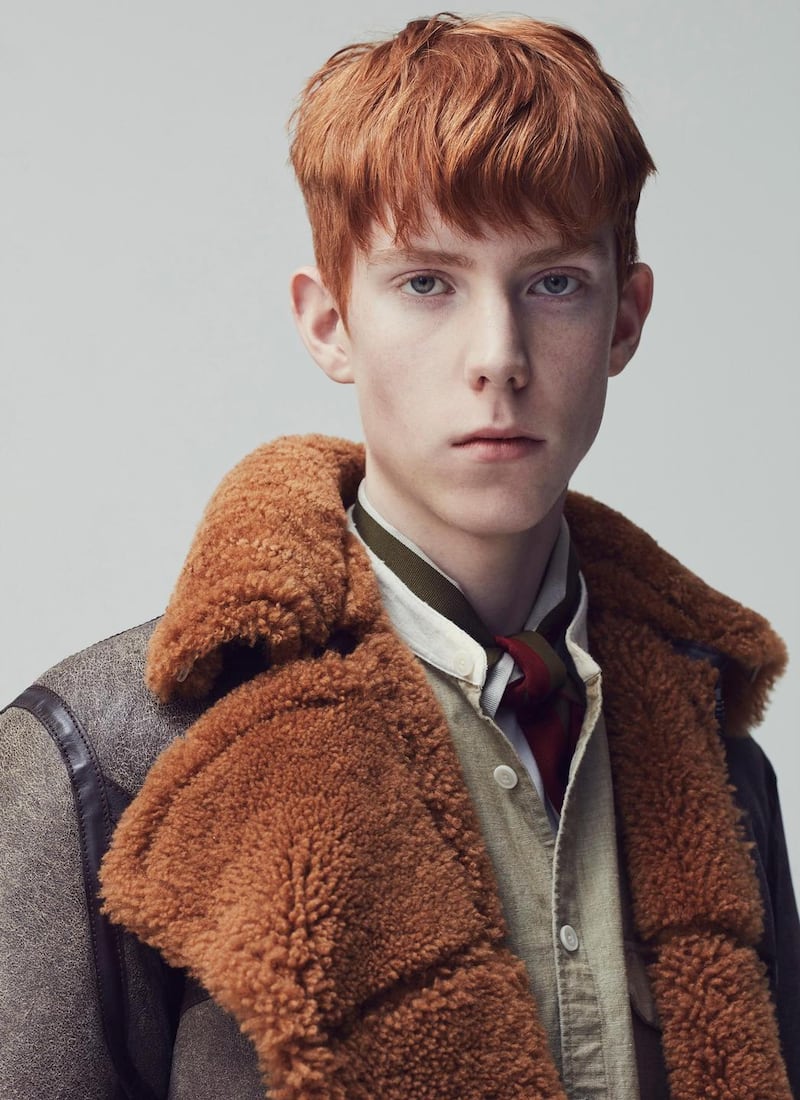
It is a source of pride that when the collection made its debut on Mr Porter last November, it sold out on the first day and became the site's second-fastest selling collection ever. It is now sold on Kent & Curwen's online store, on Mr Porter and in Brown Thomas and Selfridges, and by the end of this year will have its own shop in Covent Garden (where Paul Smith opened his first shop as did other British brands Duffer of St. George and Jones) and 40 stores worldwide.
Letting Kearns loose on the company’s archives has unleashed the Irish designer’s creative energies and the results are both stylish and playful. The tie fabric books were fascinating, he says – sporting and club ties from the Scottish regiments, houses of parliament and banks to rowing, cricket, schools and more.
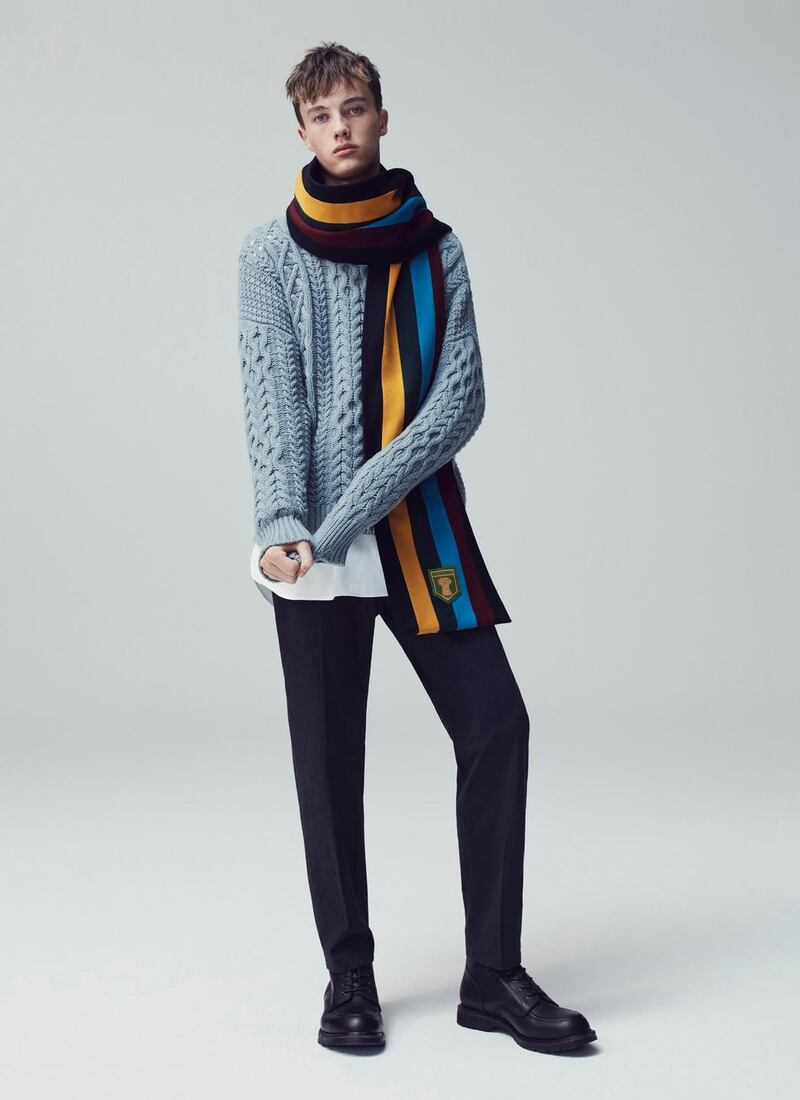
Turning up the collar of his coat and its lapels, he shows their discreet silk lining derived from variations of these tie designs. “What fascinates me is the idea of the uniform and breaking the codes [they signify] – that juxtaposition of the familiar and then breaking it.
“There are far more limitations in menswear, but that makes it more interesting in a way. You are bending the rules and can’t go too far, but you can play around and create your own identity and style,” he says.
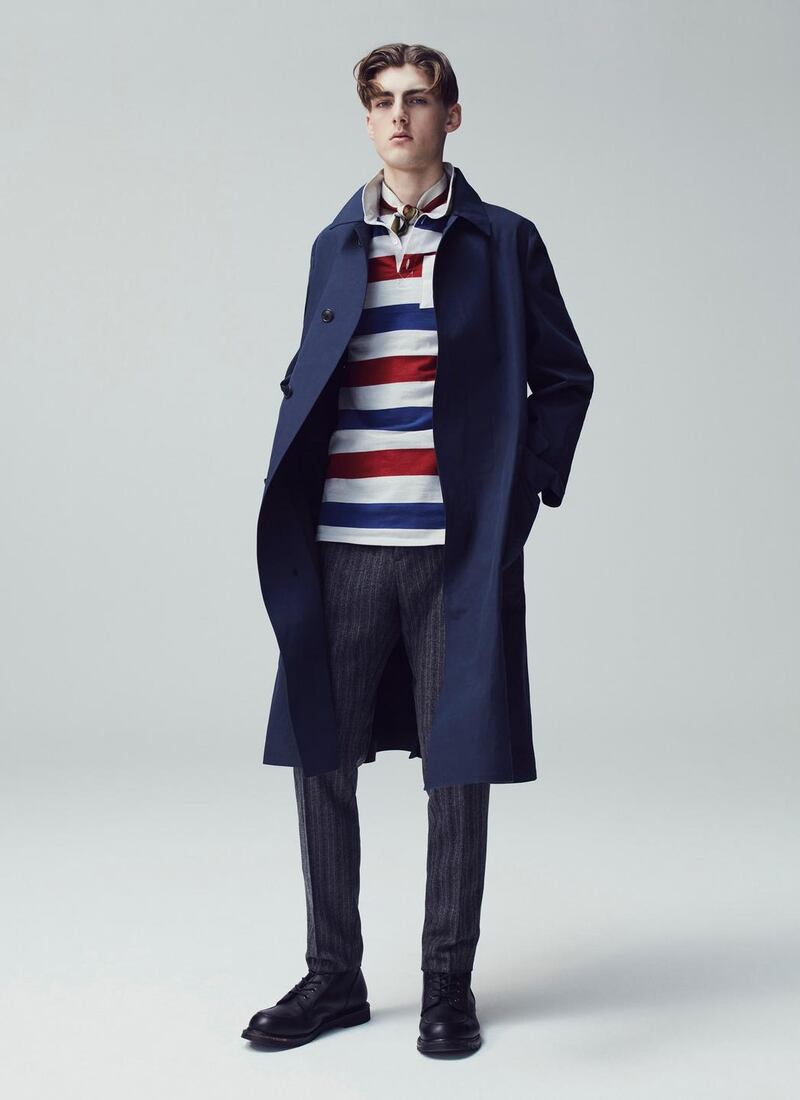
So he has taken familiar items – regatta jackets, donkey jackets, duffel jackets, varsity jackets, cricket sweaters, school and sporting scarves – and given them all a fresh new look. The duffel coat with its torpedo toggles, for instance, is made in the original fabric woven by the Somerset company, Fox Brothers, who produced “miles and miles” of cloth for officers of the first World War.
The donkey jacket and the parka, perfect examples of modern utilitarian, look contemporary while a red varsity jacket is crested with badges drawn from original scout badges. There is a lot of “weathering”, heavyweight checks and tartans that look deliberately worn and chinos made in Japanese cotton/linen with a salt finish for a crisper look. Some items like the striped jacket with the English rose may have more resonance in England than here, but others are universal.

“I have tried to give these clothes a sense of heritage and authenticity and a story that resonates with those who wear them. Men appreciate quality, functionality and authenticity – that it is a real piece like a waxed jacket or a Perfecto and we are trying to ensure that this is the essence of what we do. Making the formal casual is very David and very much his style. He takes stuff home and his son Brooklyn wears it quite a lot – so the approach is non-generational.”
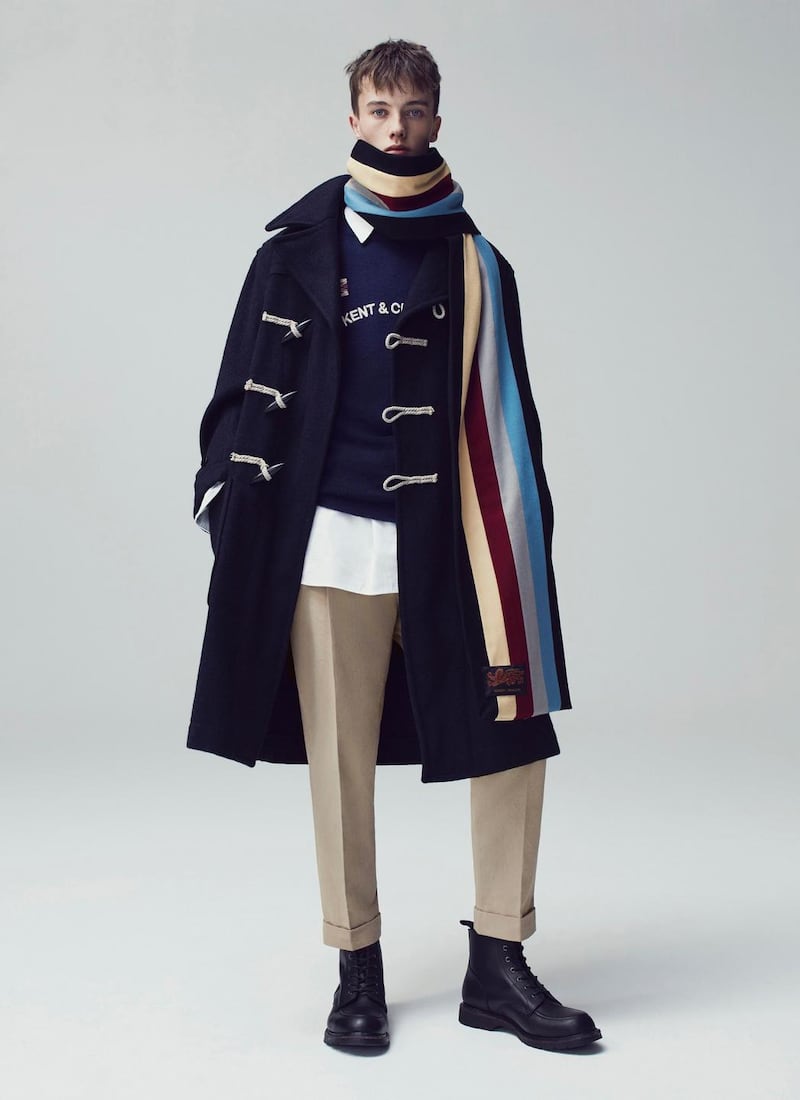
Modern dressing for men is changing. “They want versatility – to wear oversize pants one day and skinny the next and have that diversity in their wardrobe. The contemporary way is to mix everything together – suits with trainers, tailoring with denim, ties worn with a torn neck t-shirt or a denim shirt. Men are more educated about clothes today and want to express themselves, so there needs to be diversity. I hope these clothes give a sense of pride and purpose.”
- Kent & Curwen is sold on mrporter.com, www.kentandcurwen.com and in Brown Thomas











